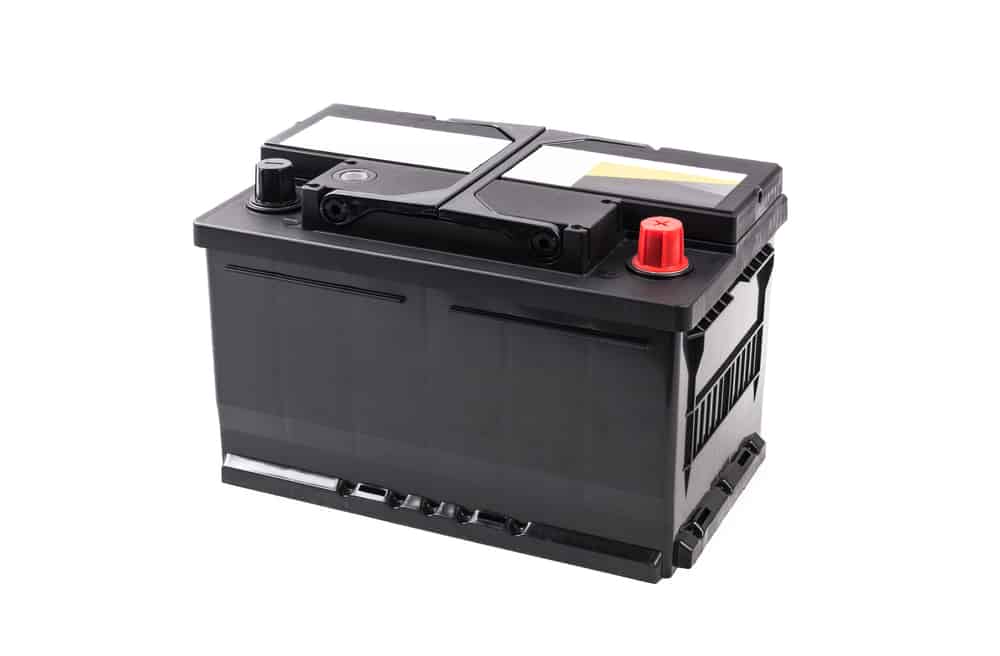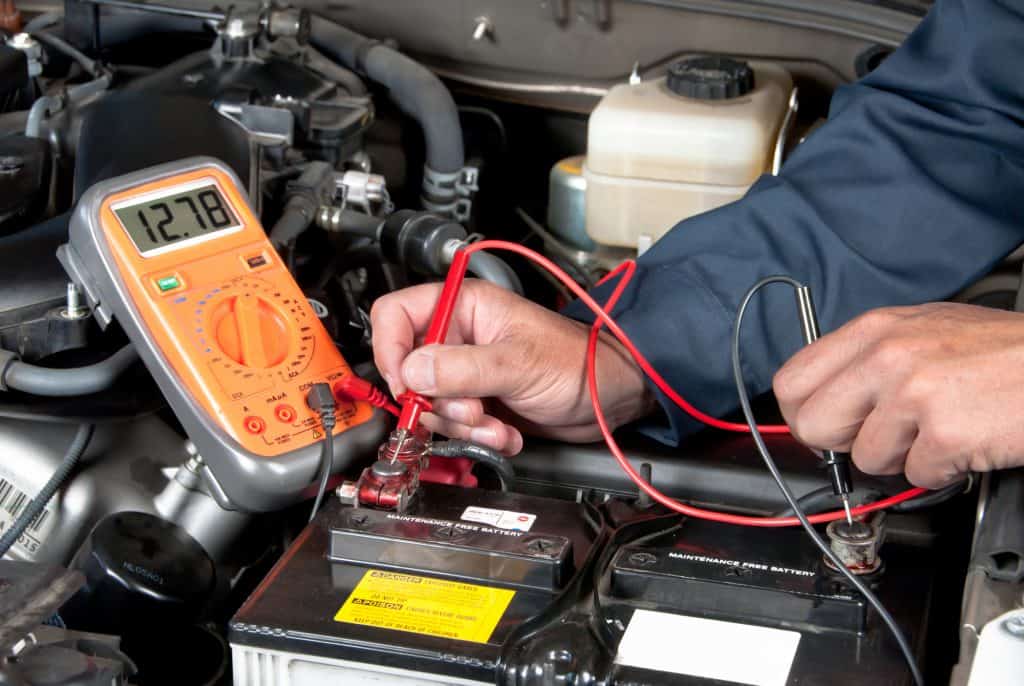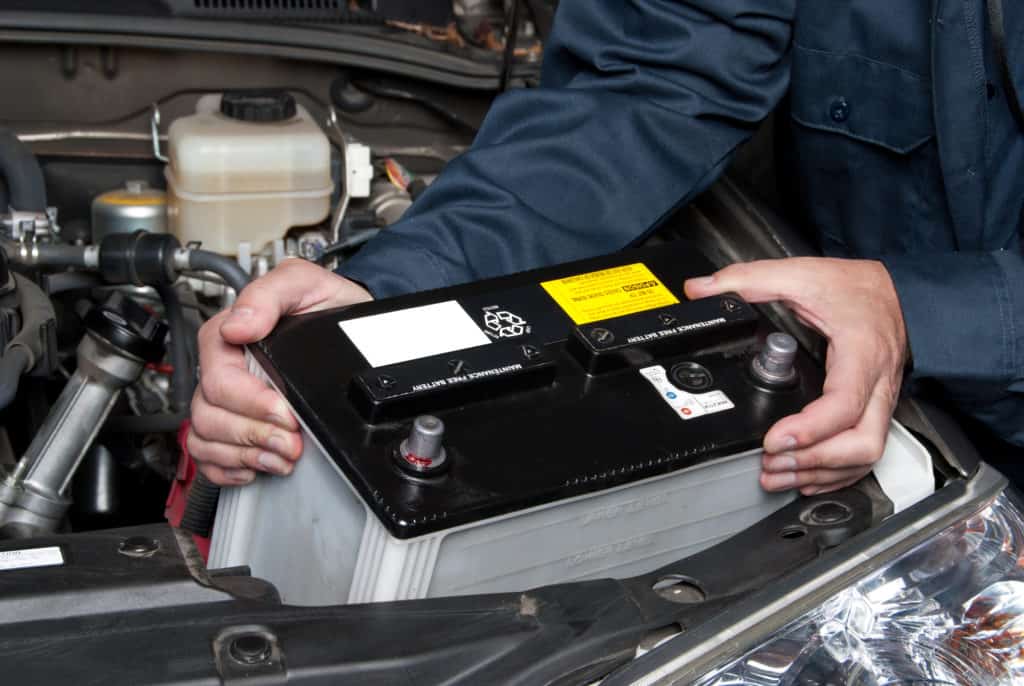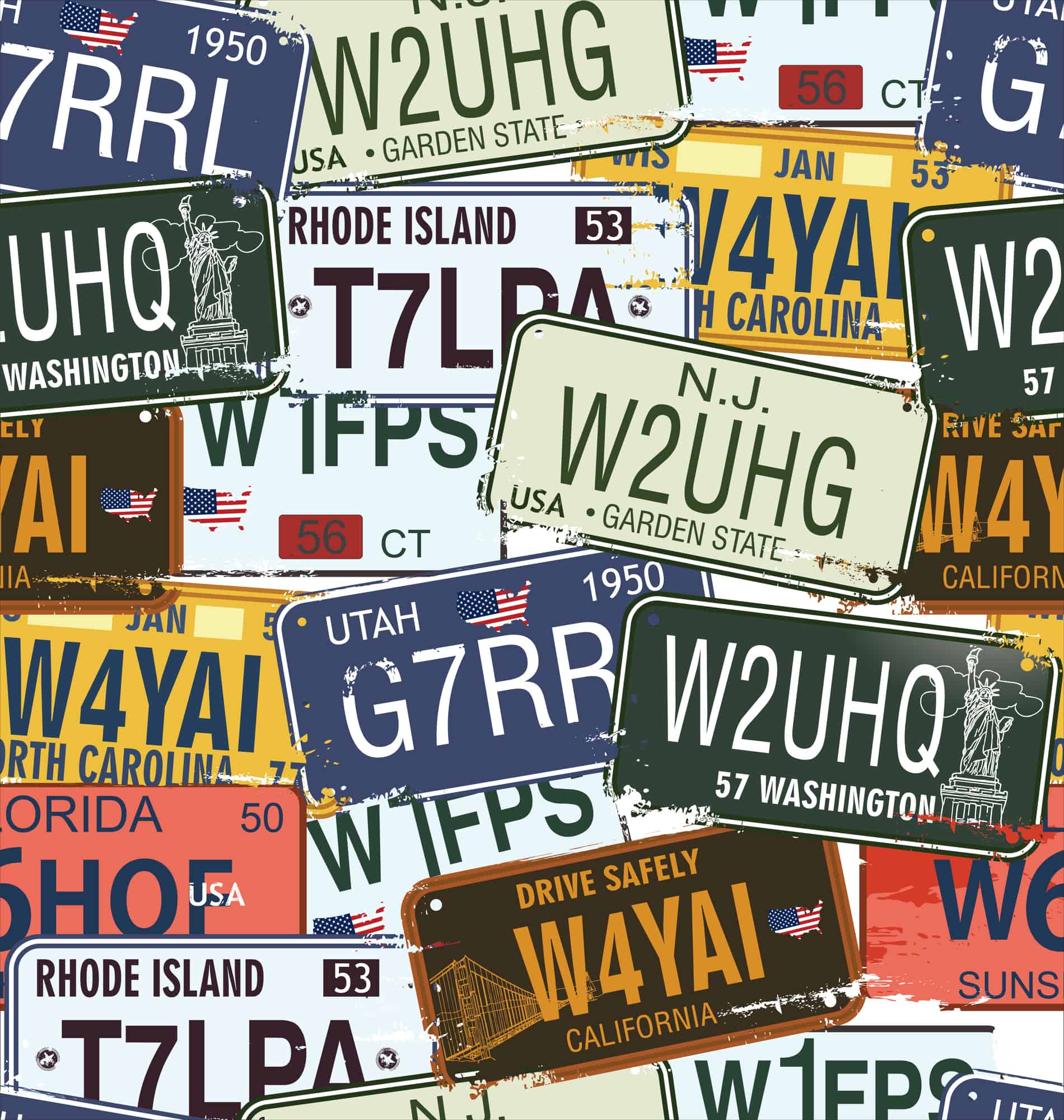
The batteries in a golf cart are carefully chosen and installed to provide a maximum amount of power for your cart.
Typically, the number of batteries that are in your cart will vary based on a myriad of different factors which can be quite complex.
Fully understanding each of these elements will make it easier for you to know how many batteries your cart takes.
That said, it is possible to change up this number if you switch the types of cells you use and change out their hookup.
Therefore, you need to read through all of the information in this article to ensure you don’t make a mistake.
Thankfully, the ultimate reality behind golf cart batteries is that they are still fairly simple to understand for most.
How Many Batteries Does a Golf Cart Take?
Typically, a golf cart’s number of batteries depends on the type of cart you own, varying based on whether it is gas or electric and the number of volts the cart needs.
A gas cart has just one battery because it only needs the battery to ignite the spark plugs and the gasoline inside of the engine.
However, an electric golf cart can have anywhere from four to six batteries, though some may have as many eight.
The reason for this variation lies in the number of volts the golf cart needs to run properly without slowing down.
Most golf carts need around 36 to 48 volts, which is usually split up between the different batteries in a variety of ways.
The number of batteries in your golf cart has a big effect on many different factors of its operation, including how smoothly it operates and the power it produces.
However, the number of batteries you have in your cart can also affect its cost and how much time and money it takes to maintain it.
Understanding a few of these elements will make it easier for you to gauge why it may be better to have fewer batteries in your cart.
However, you usually don’t have much of an option in this situation because carts are designed to use certain specific battery arrays.
Ways Golf Cart Voltages are Determined

As mentioned in the previous section, gasoline golf carts use just one battery, a 12-volt battery, without much variation.
As a result, we’re going to focus just on electric golf carts for the rest of this article, as a disclaimer, so be prepared for that.
The biggest influence on the voltage levels of your cart is the amount of power the engineers want the cart to possess.
A golf cart needs to be capable of reaching speeds of at least 15 to 20 miles per hour and be able to climb hills and inclines with little difficulty.
The engineer also decides on the layout of the batteries based on this factor, as there are many different ways a specific voltage can be reached.
Most engineers want to bring down the cost of golf carts because production costs affect the selling price of the cart, and they want to avoid making it cost too much.
The type of battery used by the golf cart also affects how many are used, as most golf carts use either lead-acid batteries or lithium-ion types to provide power.
We’ll break down the differences between these two battery types a little later to make it easier for you to choose a type for your carting needs.
Figuring Out Your Golf Cart Battery Voltage

If you aren’t certain of the amount of voltage that is available on your golf cart, you need to know how to check this value.
Most of the time, you should be able to find a printed value on the side of the battery which indicates its total voltage.
Check this value on each of your batteries and add it up to get the total amount.
For example, having four 12-volt batteries will add up to 48 volts.
However, if your batteries are already in the cart and positioned properly, there’s a good chance you might not be able to see this label.
As a result, it is important to know how you can gauge the voltage amount on your battery without looking at the label.
The easiest way to gauge this is to open up your battery compartment and check the number of holes or cells that you see on the battery.
These holes or cells are two-volt cells which produce the power for your golf cart, and you should have three, four, or six on your cart.
Once you have counted up the number of holes on the battery, multiply that number by two to get your voltage.
Perform this simple check with all of your batteries, add up the results you have found for each battery, and voila!
You have your cart’s total charge without having to do any complex voltmeter hookups or anything else of that nature.
Once you understand that amount, you can easily find batteries for your golf cart which suit your needs, depending on whether you want lithium-ion or lead-acid options.
Lithium-Ion vs. Lead-Acid Batteries

Either lithium-ion or lead-acid batteries can be used in most golf cart models, though some may be designed for specific types.
Most of the time, though, your cart can swap out these different battery options and achieve the same level of power.
However, there are major differences between these options which usually make the lithium-ion battery a better choice for most buyers.
Let’s examine the cost differences between these batteries to get an idea of what to expect when you go looking for your batteries.
First of all, a lead-acid battery is very cost-effective because it provides a steady supply of power at a reasonable price.
It does cost more to buy these batteries than the lithium-ion, often by as much as $50 to $100 per battery, which can add up when you’re stocking up a full cart.
However, the lithium-ion battery is better for moving vehicles than the lead-acid battery, which is usually better for more stationary needs.
What about the amount of power produced by each of these batteries, and how do they compare to each other?
Well, a lead-acid battery has an energy density of 50 to 90 Wh/L compared to the 125 to 600 or more Wh/L common on most lithium-ion batteries.
Let’s explain it in slightly different terms to make it easier to understand.
With this difference in battery charge, you would need lead-acid batteries 10 times the volume of a lithium-ion option to travel the same distance.
Lastly, let’s examine the charging speed of each battery type to see which is best for the on-the-go golf cart user.
You probably want a battery that can charge quickly so that you can stay busy and avoid waiting too long for a full charge.
If so, then you should pick a lithium-ion battery because it fully charges from a drained state in three hours compared to the 10 hours required for a lead-acid battery.
The answer is pretty clear here: the lithium-ion model is best suited for golf carts, while the lead-acid battery is probably best for generators or other types of similar tools.
Is It Necessary to Use Exactly the Number of Batteries You See in a Cart?

Cart owners may have the audacity to attempt to cut down on the number of batteries in their cart by focusing on fewer higher-powered options.
What we mean by that is an individual might choose to use two or three batteries to achieve the same power range as six batteries.
How is this step possible and is it a wise one for cart owners to take, one that won’t cause any damage to their cart?
It is indeed possible to perform this step if you are smart with how you balance your cart’s power output and its general needs.
For example, you can use three 12-volt batteries instead of six 6-volt batteries in a cart that needs 36 volts of power.
The same action can be done for a 48-volt cart which uses three 12-volt and two 6-volt batteries by replacing the two 6-volt batteries with a single 12-volt.
As to whether this is a wise option, that all depends on a few different elements that you need to carefully balance.
First of all, a golf cart is typically designed for a pretty specific array of batteries and may not operate as smoothly without it.
For example, your cart may have multiple 6-volt batteries for the basic power supply but a 12-volt battery which provides energy for USB ports.
By replacing these smaller batteries, you usually end up with less weight as the 12-volt is larger but not as heavy as two 6-volt batteries, but ironically, you will also have less charge for your cart.
This problem occurs because your cart won’t last as long with the 12-volt as it would with two 6-volts and will end up running out of power sooner.
Therefore, it is usually better for you to keep your battery array the way it was set up by the design engineer.
Remember, these individuals are professionals and fully understand how to balance your power load logically.
Are Car Batteries in a Golf Cart a Wise Choice?

Some golf cart users may want to change out their normal lithium-ion battery for one used in a car, a step which is technically possible.
You could very easily hook up a standard 12-volt car battery to a golf cart or even multiple car batteries to achieve a similar effect.
However, we very strongly advise against this step because car batteries are not made for that type of deep-cycle use.
The battery that you put in a car is similar to the one you would put in a gasoline-powered golf cart in that both are kept charged by an alternator as they run.
An electric golf cart does not have an alternator to provide this benefit, as their batteries are designed for long and sustained use.
As a result, a car battery is very likely to run out of juice much more quickly than a standard golf cart battery.
Even worse, they are likely to completely die after a few cycles because their cells are not designed for that kind of sustained heavy flow.
As a result, you are going to end up buying more batteries a lot more quickly than you would if you used the lithium-ion option designed for carts.
This is because you may run out of power twice as fast or even faster, and your battery is likely to last months instead of years.
Be sure to make the right choice and get a high-quality golf cart battery system to ensure your cart runs properly.



Leave a Reply